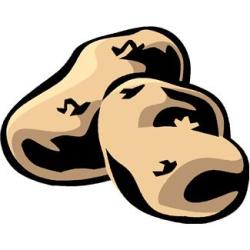Source Institutions
Source Institutions
Add to list Go to activity
Activity link broken? See if it's at the internet archive

This three-part lab helps learners understand the essential principles governing diffusion and osmosis. Dialysis tubing is used to simulate an animal cell and actual plant cells are used to illustrate the process of osmosis in plants. Learners also analyze the data they collect using graphing calculators. Concepts such as permeability, equilibrium, water potential, concentration gradients, and plasmolysis are examined in this lab.
- 4 to 24 hours
- 4 to 24 hours
- Over $20 per group of students
- Ages 14 - 18
- Activity, Experiment/Lab Activity, Lesson/Lesson Plan
- English
Quick Guide
Materials List (per group of students)
- Dialysis tubing (8-12" long, soaked in water overnight)
- String for tying dialysis tubing
- Clear plastic drinking cups
- Sharpie Markers for labeling cups
- Funnels
- Masking tape
- Glucose/starch solution (10g soluble starch to 1 liter of water. Add 150g glucose)
- Distilled water
- IKI solution (3g KI to 400 ml water. Add 0.6g iodine, stir, store in dark bottles)
- Glucose TesTape (Clinistix work too)
- 1.0-molar sucrose solution (to be used as a stock solution. Use 342g sucrose/liter of water)
- HandiWrap (or similar)
- Rubber bands
- Cork borer (varying diameters for optional exercises)
- Potatoes (sweet potatoes, turnips, jicama, carrots, winter squash, apples, radishes are optional)
- Electronic balance (triple beam will work)
- TI-82 calculator (or similar)
Subjects
-
Life Sciences
-
Cells
- Cell Structure and Function
-
Diversity of Life
- Plants
- Animals
-
Cells
-
Physical Sciences
-
Chemistry
- Solutions
-
Chemistry
-
Mathematics
-
Data Analysis and Probability
- Data Analysis
- Data Collection
- Data Representation
- Measurement
-
Data Analysis and Probability
-
The Nature of Science
-
The Scientific Process
- Conducting Investigations
- Gathering Data
- Formulating Explanations
- Communicating Results
-
The Scientific Process
Informal Categories
- Food and Cooking
Audience
To use this activity, learners need to:
- see
- see color
- read
- touch
Learning styles supported:
- Involves teamwork and communication skills
- Involves hands-on or lab activities
Other
This resource is part of:
Access Rights:
- Free access
By:
- Lukens, Jeffrey
Rights:
- All rights reserved, Access Excellence @ the National Health Museum, 2009
